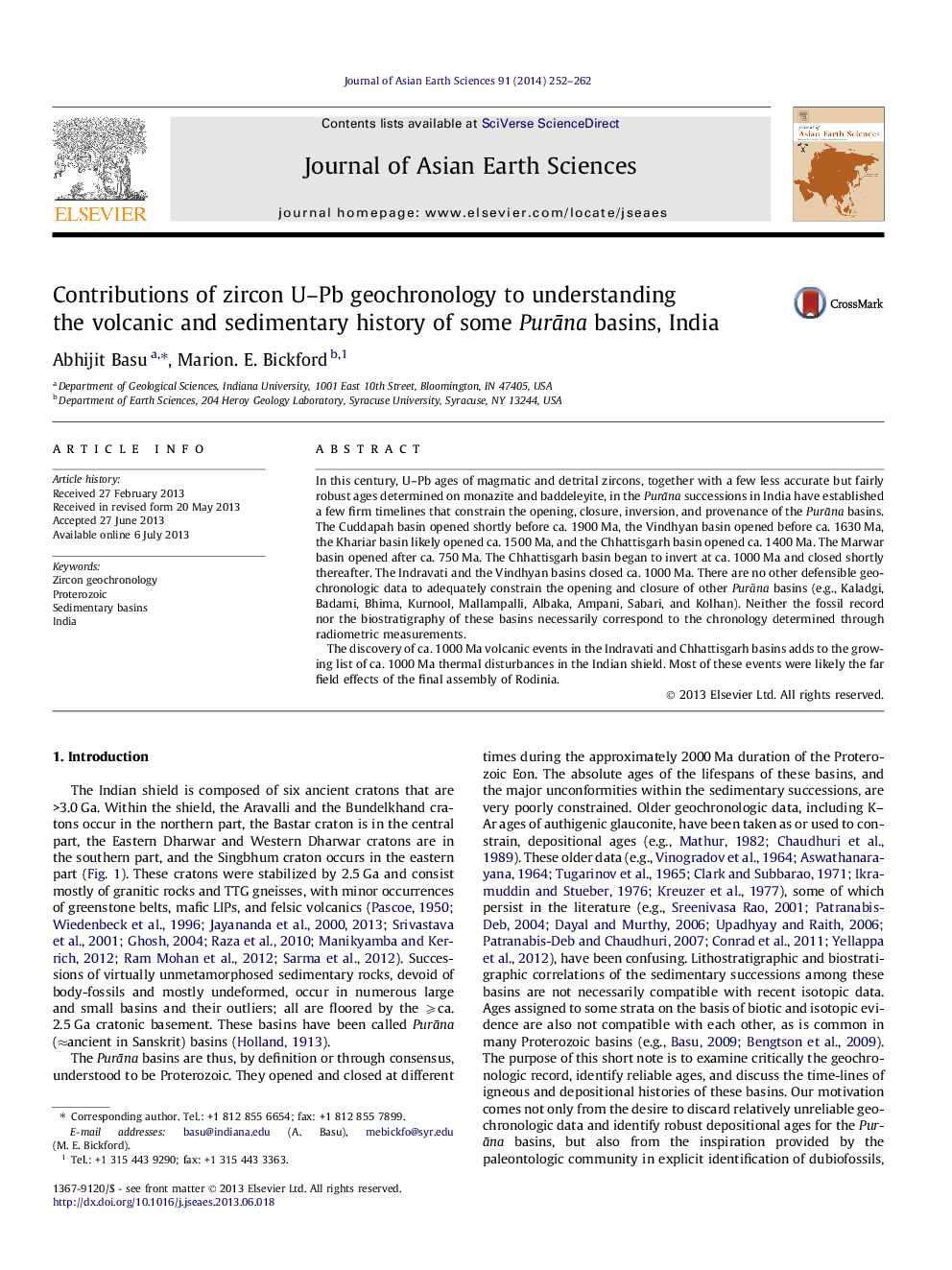| Article ID | Journal | Published Year | Pages | File Type |
|---|---|---|---|---|
| 4730563 | Journal of Asian Earth Sciences | 2014 | 11 Pages |
·Only a few Proterozoic basins in India are dated by robust geochronology.·Cuddapah, Vindhyan, Khariar and Chhattisgarh basins opened ⩾1.9–1.4 Ga.·Chhattisgarh, Indravati, and Vindhyan basins closed approximately at 1.0 Ga.·Chhattisgarh and the Indravati basins experienced felsic volcanism ca. 1.0 Ga.·The 1.0 Ga volcanism may be a far field effect of the final assembly of Rodinia.
In this century, U–Pb ages of magmatic and detrital zircons, together with a few less accurate but fairly robust ages determined on monazite and baddeleyite, in the Purāna successions in India have established a few firm timelines that constrain the opening, closure, inversion, and provenance of the Purāna basins. The Cuddapah basin opened shortly before ca. 1900 Ma, the Vindhyan basin opened before ca. 1630 Ma, the Khariar basin likely opened ca. 1500 Ma, and the Chhattisgarh basin opened ca. 1400 Ma. The Marwar basin opened after ca. 750 Ma. The Chhattisgarh basin began to invert at ca. 1000 Ma and closed shortly thereafter. The Indravati and the Vindhyan basins closed ca. 1000 Ma. There are no other defensible geochronologic data to adequately constrain the opening and closure of other Purāna basins (e.g., Kaladgi, Badami, Bhima, Kurnool, Mallampalli, Albaka, Ampani, Sabari, and Kolhan). Neither the fossil record nor the biostratigraphy of these basins necessarily correspond to the chronology determined through radiometric measurements.The discovery of ca. 1000 Ma volcanic events in the Indravati and Chhattisgarh basins adds to the growing list of ca. 1000 Ma thermal disturbances in the Indian shield. Most of these events were likely the far field effects of the final assembly of Rodinia.
